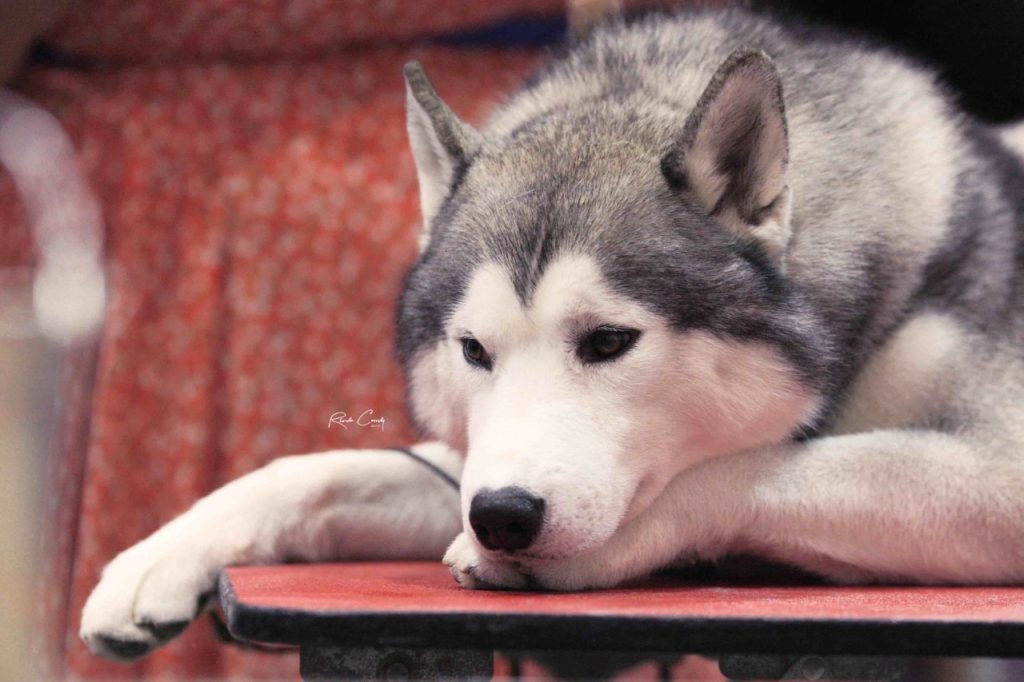Staying up to date with common, let alone rare, health risks in susceptible dog breeds can be difficult. In this regular feature, our Educational Partner, the International Partnership for Dogs (IPFD), signposts resources on a particular breed and highlights breed-specific diseases
Meet the Siberian Husky – Update Your Knowledge!

Meet the Siberian Husky – Update Your Knowledge!
IPFD has published “Get a GRIHP! on Siberian Huskies” as an in-depth examination of health and well-being of this breed. Presented content is based upon breed-expert input, Kennel and Breed Club health reports, population and breeding program health management strategies, health survey data, research, and pet insurance statistics.
The Siberian Husky is an “active, energetic, resilient breed, whose ancestors lived in the extremely cold and harsh environment of the Siberian Arctic.”1 Today’s Siberian Huskies may participate in sledding sports and many serve well as family companions.
Siberian Huskies have gentle and friendly character and no tendencies to guard or defend.
The breed is healthy with good longevity. Dogs that die of old age usually reach the age of 13 or more years. According to Finnish statistics2, a high number of accidents (at 4 years and 11 months on average) decrease the average life expectancy.
Swedish Agria insurance statistics show that the four main reasons for veterinary care in the breed during 2011–2016 were
- injury (skin, snake bite, claw, skeletal, gastrointestinal foreign body),
- digestive (vomiting, diarrhea, gastroenteritis),
- neoplasia (skin, mammary), and
- locomotor (pain or other symptoms).
All these – except injuries – were much less common than in the reference population (all breeds).
Breeding strategies from various countries list the most common conditions that can impact the members of the breed. These include epilepsy, eye diseases, and an immune disease called eosinophilic bronchopneumopathy (EBP). Eye diseases include hereditary cataracts (HC), primary open angle glaucoma (PLA), and progressive retinal atrophy (XL-PRA). For XL-PRA, a DNA test exists. Eosinophilic bronchopneumopathy is an important differential diagnosis for cough and dyspnea3,4. Siberian Huskies have a relatively high risk for this otherwise uncommon disease.
Health strategies from various countries recommend or require screening to keep watch on conditions of interest (see figure below).
Vets should advise clients and prospective owners that, as Siberian Huskies have long been bred to work, most need a lot of exercise to be content and well adjusted. The dogs can be very independent, which means they may be challenging to train.

Conditions of interest
References:
- Get a GRIHP on Siberian Huskies: https://dogwellnet.com/content/health-and-breeding/breeds/breed-specific-health-reports/get-a-grihp-on-siberian-huskies-r799/
- Finnish Kennel Club breeding database: https://jalostus.kennelliitto.fi/frmTerveystilastot.aspx?R=270&Lang=en
- Venema and Patterson 2010. Diagnosing and managing canine eosinophilic bronchopneumopathy. https://www.dvm360.com/view/diagnosing-and-managing-canine-eosinophilic-bronchopneumopathy
- Clercx 2017. Eosinophilic Bronchopneumopathy in Dogs. https://www.vin.com/apputil/content/defaultadv1.aspx?id=8506308&pid=20539&
The International Partnership for Dogs (IPFD) is a non-profit working for dog health, well-being, and welfare. This article has been prepared by its Business and Project Coordinator, Katariina Mäki, PhD (Anim Sc)

full

